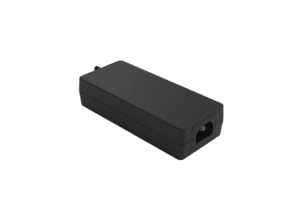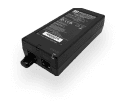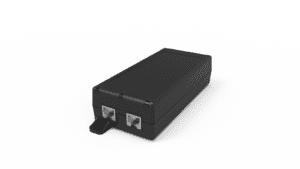BLOG
PoE Lighting: Illuminating the Future with Emerging Trends in PoE Lighting Technology
Table of contents
- Understanding PoE Lighting: The Basics of Power over Ethernet in Lighting Systems
- Benefits of PoE Lighting: Efficiency, Control, and Sustainability
- Emerging Trends in PoE Lighting Technology
- Integration of PoE Lighting with Smart Building Systems
- Energy Efficiency and Cost Savings with PoE Lighting
- Customizable Lighting Solutions
- Security and Safety Enhancements through PoE Lighting
- Phihong’s Role in Advancing PoE Lighting Technology
- FAQ

Power over Ethernet (PoE) technology has revolutionized the way we power and connect various devices, and its impact on lighting is no exception. PoE lighting is emerging as a game-changer in the building industry, offering significant advantages in terms of energy efficiency, control, and flexibility. PoE technology enables the transmission of both power and data over a single Ethernet cable, allowing for seamless integration of lighting systems with smart building technologies. As the demand for intelligent, energy-efficient lighting solutions grows, PoE lighting is poised to become a central feature in modern building infrastructure. This article explores the basics of PoE lighting, its benefits, emerging trends, and best practices for implementation, providing insights into how PoE is illuminating the future of indoor lighting.
Understanding PoE Lighting: The Basics of Power over Ethernet in Lighting Systems
PoE lighting involves the use of Ethernet cables to deliver both power and data to lighting fixtures. This setup eliminates the need for traditional power outlets, allowing for a more flexible and efficient installation process. PoE lighting systems are typically connected to a PoE-enabled switch or a traditional switch connected to a PoE injector, which supplies power and enables communication between the lighting fixtures.
The data aspect of PoE lighting is particularly significant, as it allows for advanced control features such as dimming, color tuning, and scheduling. Through a networked system, building managers can monitor and adjust lighting in real-time, optimizing energy usage and enhancing the overall lighting experience. Additionally, PoE lighting systems can be integrated with other smart building technologies, such as HVAC and security systems, creating a cohesive and responsive environment.
The adoption of PoE lighting is driven by its numerous advantages over traditional lighting systems. These include simplified installation, reduced energy consumption, enhanced control and automation capabilities, and the ability to collect and analyze data for improved lighting management. As PoE technology continues to evolve, it is expected to play a crucial role in the future of smart buildings and energy-efficient lighting solutions.
Here’s how it works:
- Data to the Lighting Fixture: Initially, the network switch (whether PoE-enabled or not) sends data through the Ethernet cable to the lighting fixture. This data can include control signals, such as dimming commands, color changes, or other instructions to adjust the lighting based on a central control system.
- Data from the Lighting Fixture: The PoE-enabled lighting fixture can also send data back to the network switch. This data might include status updates, power consumption information, sensor data (if the fixture has built-in sensors like motion detectors or light sensors), or any other relevant information that needs to be communicated back to the central system.
Summary of the Data Flow:
- Outbound Data: Travels from the switch to the midspan, and then to the PoE-enabled lighting fixture.
- Inbound Data: Returns from the PoE-enabled lighting fixture to the midspan, and then back to the network switch.
This bidirectional data flow is what enables centralized control and monitoring in PoE lighting systems, allowing for real-time adjustments and management of the lighting network.
Benefits of PoE Lighting: Efficiency, Control, and Sustainability
PoE lighting provides numerous advantages, making it an ideal choice for modern buildings, especially in terms of efficiency and control. By delivering both power and data through a single cable, PoE lighting minimizes the need for additional electrical infrastructure and extensive wiring. This results in significant cost savings and shorter installation times. The streamlined setup also simplifies maintenance and upgrades, allowing lighting fixtures to be easily connected or reconfigured without the hassle of extensive rewiring.
In terms of energy efficiency, PoE lighting systems are highly efficient due to their ability to be precisely controlled and optimized. With features like dimming, scheduling, and occupancy sensing, PoE lighting can reduce energy consumption by ensuring that lights are only used when needed and at the appropriate levels. This not only lowers energy costs but also contributes to sustainability goals by reducing the building’s overall carbon footprint.
Control is another major advantage of PoE lighting. Through a centralized management system, building operators can monitor and adjust lighting settings in real-time, either manually or through automated processes. This level of control allows for the creation of customized lighting environments that enhance occupant comfort and productivity. For example, lighting can be adjusted to mimic natural daylight patterns, improving well-being and reducing the effects of artificial lighting.
Sustainability is further enhanced by the ability of PoE lighting systems to integrate with other building management systems, such as HVAC and security. This integration allows for more coordinated and efficient operation of the building’s infrastructure, leading to further reductions in energy use and improved overall building performance.
Benefits Summary
- Reduced Infrastructure Requirements: Minimizes the need for additional electrical infrastructure and extensive wiring.
- Cost Savings: Lowers installation costs and shortens installation times by using a single cable for power and data.
- Simplified Maintenance: Eases maintenance and upgrades, allowing easy reconfiguration without extensive rewiring.
- Energy Efficiency: Optimizes energy use with features like dimming, scheduling, and occupancy sensing, reducing overall energy consumption.
- Enhanced Control: Provides centralized management for real-time monitoring and adjustment of lighting settings, improving occupant comfort and productivity.
- Sustainability: Reduces the building’s carbon footprint by lowering energy consumption and integrating with other building systems for more efficient operation.
- Improved Building Performance: Supports integration with HVAC, security, and other systems, leading to coordinated and efficient building management.
Emerging Trends in PoE Lighting Technology
As PoE lighting technology continues to evolve, several emerging trends are shaping the future of this innovative lighting solution. One of the most significant trends is the increasing adoption of LED lighting combined with PoE technology. LED lights are inherently more energy-efficient than traditional incandescent or fluorescent bulbs, and when combined with PoE, they offer even greater efficiency and control.
Another trend is the integration of PoE lighting with Internet of Things (IoT) devices. By connecting lighting fixtures to the IoT, building managers can gain unprecedented insights into how lighting is used within a space. This data can be used to optimize lighting settings, enhance energy efficiency, and improve occupant comfort. For example, sensors embedded in lighting fixtures can detect occupancy levels and adjust lighting accordingly, ensuring that lights are only on when needed.
The use of PoE lighting in smart cities is also on the rise. As urban areas become more connected and data-driven, PoE lighting is being deployed to enhance public safety, reduce energy consumption, and improve the overall quality of urban life. Smart streetlights powered by PoE can be dimmed or brightened based on real-time data, such as traffic patterns or pedestrian activity, leading to more efficient use of resources.
Wireless PoE lighting solutions are another emerging trend, providing even greater flexibility in lighting design and installation. These systems combine the benefits of PoE with wireless technology, allowing for the deployment of lighting fixtures in areas where running Ethernet cables may be challenging. Wireless PoE lighting is particularly useful in retrofitting older buildings with modern, energy-efficient lighting systems.
Integration of PoE Lighting with Smart Building Systems
One of the key advantages of PoE lighting is its ability to integrate seamlessly with other smart building systems. This integration allows for a more holistic approach to building management, where lighting, HVAC, security, and other systems work together to create a more centralized and responsive environment.
For example, integrating PoE lighting with HVAC systems can lead to significant energy savings. Lighting sensors can detect when a room is unoccupied and signal the HVAC system to reduce heating or cooling, thereby lowering energy consumption. Similarly, PoE lighting can be integrated with security systems, where lights automatically turn on in response to security breaches or alarms, enhancing safety and security within the building.
The centralized control offered by PoE lighting systems also simplifies building management. Building operators can monitor and adjust all connected systems from a single platform, making it easier to manage energy use, respond to issues, and optimize building performance. This level of control is particularly valuable in large buildings or campuses, where managing multiple systems can be complex and time-consuming.
Furthermore, the data collected by PoE lighting systems can be used to inform other building management decisions. For instance, data on lighting usage patterns can help identify areas where energy use can be reduced or where lighting conditions can be improved to enhance occupant comfort. By integrating PoE lighting with other smart systems, building managers can create a more efficient, sustainable, and responsive building environment.
Key Features and Benefits
- Centralized Control: Streamlines building management by allowing operators to control multiple systems from a single platform.
- Enhanced Efficiency: Integration with HVAC and security systems leads to more coordinated and efficient building operations.
- Data-Driven Decision Making: Leverages data from PoE lighting systems to optimize building performance and occupant comfort.
Energy Efficiency and Cost Savings with PoE Lighting
In addition to delivering power and data through a single Ethernet cable—eliminating the need for extra electrical infrastructure and wiring—PoE lighting’s efficiency is further boosted by advanced control features like dimming, scheduling, and occupancy sensing.
With features like dimming and scheduling, lights can be adjusted to provide only the amount of illumination needed at any given time. This reduces energy waste and ensures that lights are not left on when they are not needed. Additionally, occupancy sensors can detect when a room is empty and automatically turn off the lights, further reducing energy use.
The cost savings associated with PoE lighting extend beyond energy efficiency. The simplified installation process, which eliminates the need for extensive electrical wiring, reduces labor and material costs. Maintenance is also easier and less costly, as PoE lighting systems can be monitored and adjusted remotely, reducing the need for on-site interventions.
Over time, the energy savings and reduced maintenance costs associated with PoE lighting can lead to significant financial benefits. Buildings equipped with PoE lighting are also likely to have lower utility bills and may qualify for energy efficiency incentives or rebates, further enhancing the return on investment.
Customizable Lighting Solutions
One of the standout features of PoE lighting is its flexibility and ability to provide customizable lighting solutions for a wide range of applications. Whether in commercial offices, educational institutions, healthcare facilities, or industrial environments, PoE lighting can be tailored to meet the specific needs of each space.
In office settings, PoE lighting can be used to create personalized lighting environments that enhance employee comfort and productivity. For example, individual workstations can be equipped with lighting controls that allow users to adjust the brightness and color temperature to their preferences. This customization not only improves comfort but also reduces eye strain and fatigue, leading to a more productive work environment.
In industrial environments, PoE lighting can be customized to meet the specific needs of different tasks and work areas. For example, bright, focused lighting can be used in assembly areas, while softer, ambient lighting may be more appropriate for break rooms or administrative offices. The ability to control lighting levels and settings remotely also enhances safety and efficiency in these environments.
Security and Safety Enhancements through PoE Lighting
In addition to its efficiency and customization capabilities, PoE lighting also offers significant security and safety benefits. By integrating PoE lighting with security systems, building operators can enhance the overall safety of their facilities while also improving energy efficiency.
For example, PoE lighting can be programmed to turn on automatically in response to security alarms or breaches, providing immediate illumination in critical areas such as entryways, stairwells, or parking lots. This not only deters potential intruders but also ensures that occupants can safely navigate the building in the event of an emergency.
PoE lighting can also be integrated with security cameras to enhance surveillance capabilities. In low-light conditions, the lighting can be adjusted to provide better visibility, improving the quality of security footage and increasing the effectiveness of the surveillance system. Additionally, the ability to control lighting remotely allows security personnel to adjust lighting levels in real-time, responding to potential threats as they arise.
In terms of safety, PoE lighting can be used to create safer work environments by providing adequate illumination in high-risk areas. For instance, in industrial settings, proper lighting is essential for preventing accidents and ensuring that workers can see potential hazards. PoE lighting systems can be configured to provide consistent, high-quality lighting in these areas, reducing the risk of accidents and improving overall workplace safety.
Phihong’s Role in Advancing PoE Lighting Technology
Phihong’s commitment to quality and innovation is evident in its range of PoE injector and midspan solutions, designed to power and enhance PoE lighting systems. While not directly involved in the creation of PoE lighting fixtures, Phihong plays a crucial role by providing reliable and efficient power delivery solutions that enable the seamless operation of advanced PoE lighting setups.
In addition to delivering top-tier products, Phihong is actively engaged in advancing the broader PoE industry through research, collaboration, and participation in industry forums. By staying at the forefront of technological advancements, Phihong ensures that its customers have access to the latest innovations in PoE power solutions, helping them deploy smarter, more efficient, and sustainable lighting systems in modern building environments.
CLIENT'S QUOTE
Phihong's Power-Over-Ethernet solutions have transformed our network, boosting efficiency and reducing costs. Their seamless integration has simplified both installation and maintenance.
Explore More with Phihong USA
As we conclude our exploration of USB-C adapter technology, it’s clear how these innovations are shaping the future of the tech world. Phihong USA is leading this technological advancement, offering a diverse range of USB-C power solutions tailored to the evolving demands of modern industries.
Phihong USA’s extensive product lineup includes:
- Power over Ethernet (PoE) Solutions: Delivering reliable power and data transmission over a single cable, ideal for simplifying network installations and reducing costs.
- AC/DC Adapters and Power Supplies: From compact adapters to industrial-grade power supplies, Phihong provides solutions that ensure efficiency and reliability in various applications.
- Battery Chargers: Customizable chargers for lithium-ion and lead-acid batteries, supporting a wide range of power requirements for mobility and industrial applications.
- Medical Power Supplies: Specialized power solutions designed to meet the stringent requirements of the healthcare industry, ensuring safety and reliability.
Phihong USA is committed to innovation and excellence, continually developing products that meet the highest standards of performance and reliability. Their global reach and dedication to customer support make them a trusted partner in powering the future.
Here are some useful links to explore Phihong USA’s offerings further and bring in new potential clients:
Visit Phihong USA to discover how their advanced power solutions can support your business needs. Whether you’re looking to upgrade your network, or find reliable power supplies, Phihong USA has you covered.
By choosing Phihong USA, you’re partnering with a leader in power technology, ensuring your operations run smoothly and efficiently with top-tier power solutions.

Contact Our Team Today!
Our dedicated sales team and international partners are prepared to support you with your latest projects and initiatives globally.
FAQ
What are the key benefits of using PoE lighting in modern buildings?
PoE lighting offers several key benefits that make it an attractive choice for modern buildings, particularly in terms of energy efficiency, control, and sustainability. One of the primary advantages is the simplified installation process. Unlike traditional lighting systems, which require separate power and data cables, PoE lighting uses a single Ethernet cable to deliver both power and data to lighting fixtures. This reduces the complexity of the installation, lowers labor and material costs, and makes it easier to reconfigure or expand the lighting system as needed.
Another significant benefit of PoE lighting is the advanced control capabilities it offers. Through a centralized management system, building operators can monitor and adjust lighting settings in real-time, allowing for greater customization and optimization of energy use. Features such as dimming, scheduling, and occupancy sensing can be easily implemented, ensuring that lights are only used when necessary and at the appropriate levels. This not only reduces energy consumption but also enhances occupant comfort and productivity.
PoE lighting also contributes to sustainability efforts by reducing the building’s overall energy consumption and carbon footprint. The ability to precisely control lighting levels and integrate with other smart building systems, such as HVAC and security, leads to more efficient operation and reduced waste. Additionally, PoE lighting systems are often compatible with energy-efficient LED fixtures, further enhancing their environmental benefits.
Furthermore, PoE lighting is highly flexible and scalable, making it suitable for a wide range of applications, from commercial offices to industrial facilities. The system can be easily expanded or reconfigured to meet the changing needs of the building, whether it involves adding new fixtures, upgrading to more advanced technology, or integrating with emerging IoT devices. This flexibility ensures that the PoE lighting system can adapt to future demands, providing long-term value and sustainability.
In summary, the key benefits of PoE lighting include simplified installation, advanced control capabilities, energy efficiency, sustainability, and flexibility. These advantages make PoE lighting an ideal choice for modern buildings that prioritize efficiency, comfort, and environmental responsibility.
How does PoE lighting integrate with other smart building systems?
PoE lighting integrates seamlessly with other smart building systems, creating a cohesive and efficient building management infrastructure. One of the main advantages of PoE lighting is its ability to be centrally controlled and monitored through a building management system (BMS). This integration allows for real-time adjustments and coordination between different systems, such as HVAC, security, and lighting, leading to enhanced operational efficiency and energy savings.
For example, PoE lighting can be integrated with HVAC systems to optimize energy use based on occupancy. Sensors embedded in the lighting fixtures can detect when a room is occupied and adjust the HVAC settings accordingly. When a room is unoccupied, the lights can dim or turn off, and the HVAC system can reduce heating or cooling, thereby conserving energy. This level of integration ensures that the building operates as efficiently as possible, reducing energy waste and lowering utility costs.
Integration with security systems is another significant advantage of PoE lighting. In the event of a security breach or alarm, the PoE lighting system can be programmed to respond automatically by illuminating specific areas, such as entryways, corridors, or parking lots. This immediate response enhances security by improving visibility and deterring potential intruders. Additionally, PoE lighting can be connected to surveillance cameras, providing better lighting conditions for video monitoring and improving the quality of recorded footage.
PoE lighting also supports the integration of IoT devices, further enhancing its functionality and control capabilities. By connecting lighting fixtures to the IoT, building managers can gather data on lighting usage, occupancy patterns, and energy consumption. This data can be analyzed to identify trends, optimize lighting settings, and improve overall building performance. IoT integration also enables remote monitoring and control, allowing building operators to make adjustments from anywhere, at any time.
Moreover, the integration of PoE lighting with other smart building systems supports the development of smart cities, where data-driven decision-making and interconnected systems contribute to more sustainable and efficient urban environments. Smart street lights powered by PoE, for instance, can adjust their brightness based on real-time data such as traffic patterns or weather conditions, reducing energy consumption and enhancing public safety.
In summary, PoE lighting integrates with other smart building systems by providing centralized control, optimizing energy use, enhancing security, supporting IoT devices, and contributing to the development of smart cities. This integration creates a more efficient, responsive, and sustainable building environment, benefiting both building operators and occupants.
What are the best practices for implementing PoE lighting systems?
Implementing PoE lighting systems requires careful planning, proper installation, and ongoing management to ensure optimal performance and efficiency. By following best practices, building operators can maximize the benefits of PoE lighting and create a reliable, scalable, and energy-efficient lighting system.
The first step in implementing a PoE lighting system is to conduct a thorough site assessment. This assessment should include an analysis of the building’s existing infrastructure, identification of areas that require special lighting considerations, and an evaluation of the potential for integrating PoE lighting with other building systems. Understanding the specific lighting needs and challenges of the building will inform the design of the PoE lighting system and help ensure that it meets the building’s requirements.
Planning for future expansion is also critical when designing a PoE lighting system. PoE technology is inherently scalable, allowing for the easy addition of new lighting fixtures or upgrades to more advanced technology. However, it’s important to consider future growth and changes in space usage during the planning phase. By choosing a PoE lighting system that is flexible and scalable, building operators can ensure that the system can accommodate future needs without requiring significant modifications.
Proper installation and configuration are essential to the success of a PoE lighting system. This includes selecting high-quality Ethernet cables, ensuring that all connections are secure and properly sealed, and configuring the system for optimal performance. Working with experienced professionals who are familiar with PoE technology is crucial to ensuring that the system is installed correctly and operates reliably.
Once the PoE lighting system is installed, centralized management can greatly enhance its efficiency and performance. Centralized management platforms allow building operators to monitor and control the lighting system in real-time, making it easier to adjust settings, troubleshoot issues, and optimize energy use. These platforms also provide valuable data that can be used to make informed decisions about lighting management and building operations.
Regular maintenance and monitoring are also important for ensuring the long-term reliability of the PoE lighting system. This includes periodic inspections of the lighting fixtures, cables, and connections to identify any potential issues before they become serious problems. Monitoring the system’s performance through the centralized management platform can also help detect and address issues early, minimizing downtime and ensuring continuous operation.
In summary, the best practices for implementing PoE lighting systems include conducting a thorough site assessment, planning for future expansion, ensuring proper installation and configuration, utilizing centralized management, and maintaining regular monitoring and maintenance. By following these practices, building operators can create a PoE lighting system that is efficient, reliable, and capable of meeting the needs of their building both now and in the future.














